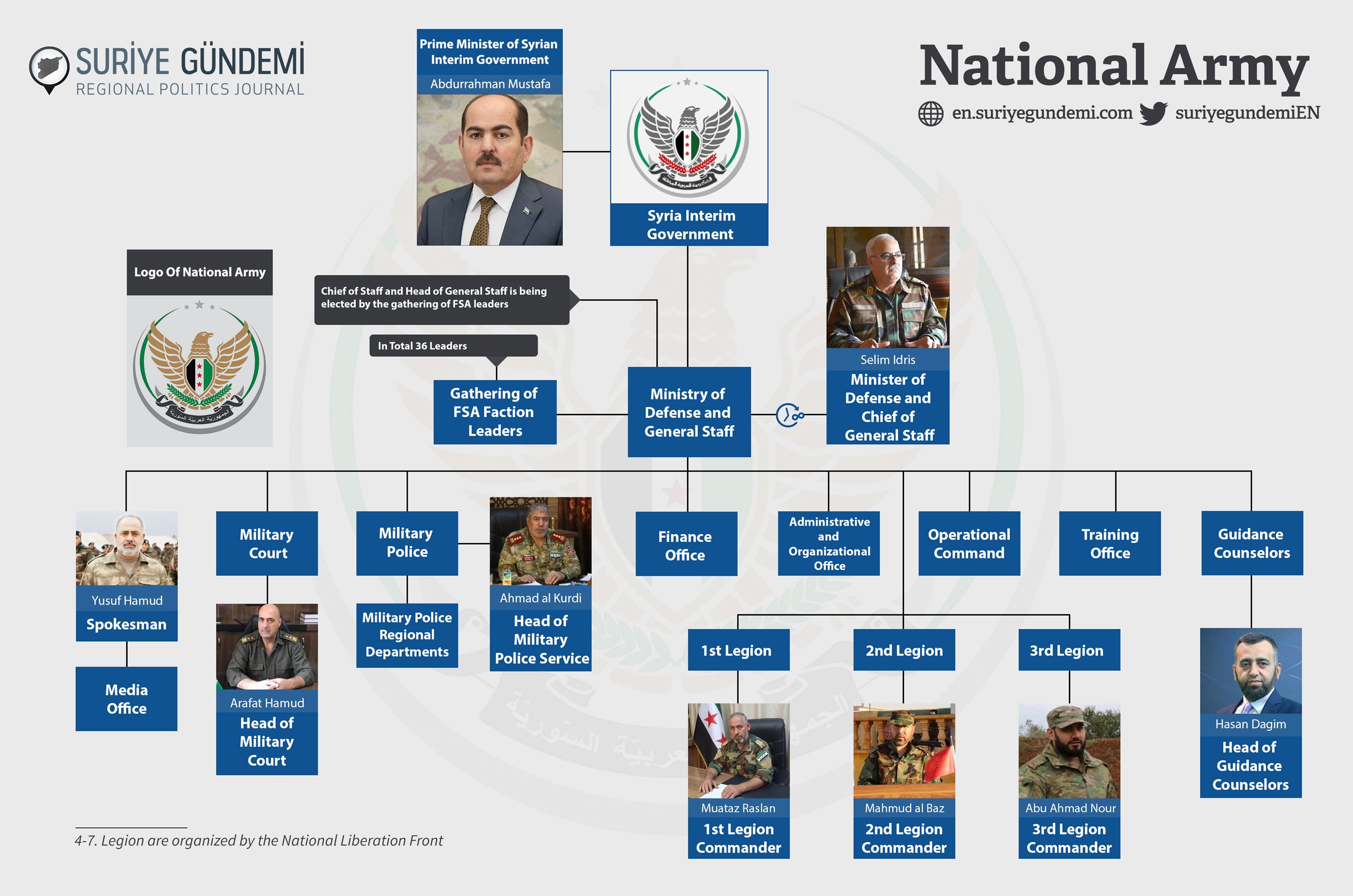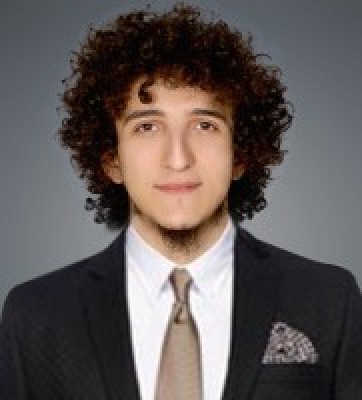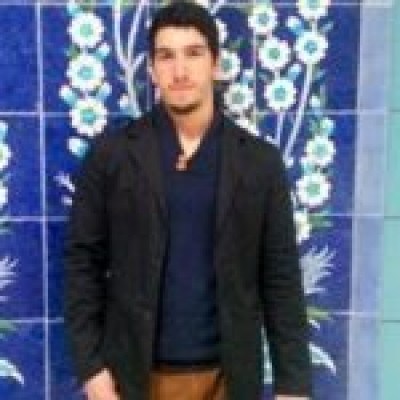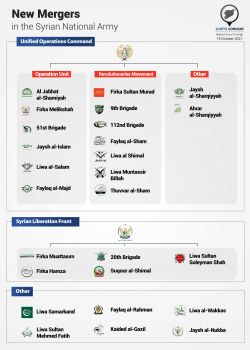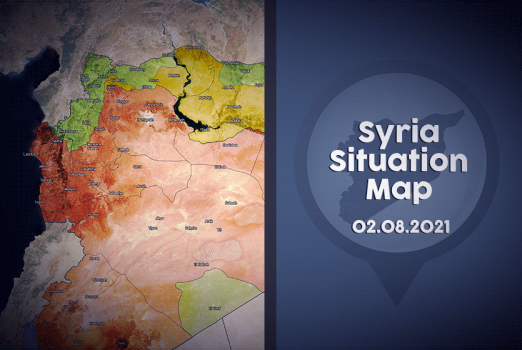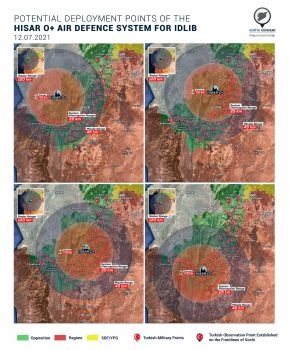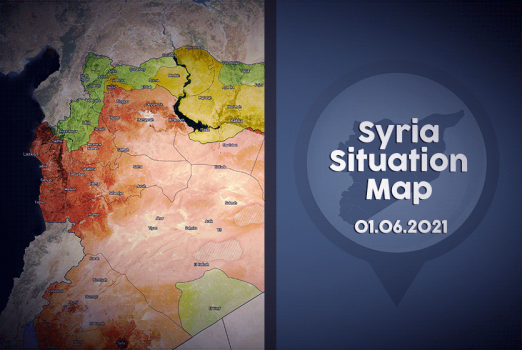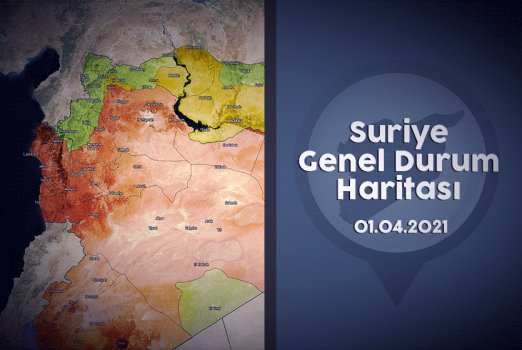The Structure of the Syrian National Army
After eight years of war, the Syrian opposition announced that all armed groups united under the command of the Syrian Interim Government’s Defense Ministry and joined forces under the banner of the National Army. This announcement marks a milestone in the journey of the Syrian opposition which united ranks and is a product of a 3-year process that commenced with the start of the Operation Euphrates Shield. With the increasing role of Turkey as the sole backer of the Syrian opposition and following Turkish pressure, the remaining factions in Idlib, Afrin, and northern Aleppo came together. However, the announcement in and of itself does not guarantee the unity of the Syrian opposition. Yet and despite the fact that many structural and environmental obstacles remain, the announcement may provide new opportunities for the actors involved in the Syrian War. Most notably, the announcement of the unification also comes with an essential change within the Syrian opposition. For the first time, the Syrian Interim Government formed by the Syrian National Coalition has managed take the armed opposition under its command. With this step, the political opposition for the first time may be able to proclaim itself the representative of the entire Syrian opposition.
In general, the factions that united and became the National Army can be summarized as all the factions in Idlib, Latakia, Hama, western Aleppo, Afrin, and northern Aleppo. However, a deeper look into the factions offers important insight into the National Army’s constituent components. Among the 41 factions that joined the merger, 15 are from the National Front for Liberation and 26 from the Syrian National Army. Thirteen of these factions were formed after the United States cut its support to the armed Syrian opposition.
In terms of numbers, the National Army comprises of approximately 70,000-90,000 fighters. The biggest factions in numbers in the National Army are Ahrar al-Sham, Ahrar al Sharqiyah, Faylaq al-Sham, Firka Hamza, Firka Sultan Murad, Free Idlib Army, Jabhat Shamiyah, Jaysh al-Islam, Jaysh al-Ahrar, Jaysh a- Nasr, Jaysh al-Sharqiya, and Jaysh al-Nukhba.
The Structure of the Syrian National Army
The Syrian National Army is officially part of the Syrian Interim Government and responds to the Defense Ministry of the Syrian Interim Government. Abdurrahman Mustafa as the president of the Syrian Interim Government and Selim Idris as the Minister of Defense are in charge over the Syrian National Army. Selim Idris is also the Chief of Staff of the Syrian National Army. However, the Gathering of the Syrian National Army faction leaders as a council has a strong say within the Syrian National Army. The commanders of the three legions of the Syrian National Army; Muataz Raslan, Mahmud el Baz and Abu Ahmad Nour are responsible for all of the factions of their legion. Each commander have officially order command of them anda re taking decision as representatives of their legion in coordination with Selim Idris and the other two commanders of the other legions. The Chief of Staff and the Defense Ministry have different offices operating autonomous from the factions of the Syrian National Army and only respond to Selim Idriss. The spokesman Yusuf Hamoud and his media Office, the head of the military court Arafat Hamourd and the military court office, the head of the military police service Ahmad al Kurdi and the military police, the head of the guidance counselors Hasan Dagim and the guidance counselors office, the finance office, the administration and organization office, the operational office and the training office are all under the command of the Syrian Defense Ministry.
The Composition of the Legions of the Syrian National Army
While the 4-7 legions of the Syrian National Army compose of the factions in İdlib of the National Front for Liberation and have yet to be formed, the first three legions of the Syrian National Army have a set structure. The first three legions are also the ones who joined the Operation Peace Spring.
The First Legion composes of the 11. Division, 12. Division, 13. Division and the 14. Division.
The 11. Division composes of the 111. Brigade (Liwa al Shimal), the 112. Brigade (Jaysh al Ahfad) and the 113. Brigade (Jaysh al Ahfad).
The 12. Division composes of the 121. Brigade (Liwa Samarkand), the 122. Brigade (Liwa Muntassir Billah) and the 123. Brigade (Ahrar al Sharqiyyah).
The 13. Division composes of the 131. Brigade (Sultan Mehmed Fatih), the 132. Brigade (Kaidat al Ghazil) and the 133. Brigade (Liwa al Wakkas).
The 14. Division composes of the 141. Brigade (Faylaq al Sham), the 142. Brigade (Sultan Sulaiman Shah), 142. Brigade (9th Division), 144. Brigade (20th Division), 145. Brigade (Jaysh al Nukhba) and the 146. Brigade (Jaysh al Sharqiyyah).
The Second Legion composes of the 21. Division (Firka Sultan Murad), the 22. Division (Firka Hamza and Liwa Suqour al Shimal), the 23. Division (Firka Muattasim and Rejal al Harb), the 24. Division (Firka Sultan Murad), the 25. Division (Jaysh al Islam) and the 26. Division (Feylaq al Rahman).
The Third Legion composes of the 31. Division (Jabhat Shamiyah), the 32. Division (Jabhat Shamiyah and Suqour al-Sham), the 33. Division (Jabhat Shamiyah), the 34. Division (51. Division [Sultan Osman, Thuwwar Al Jazira, Fawc al Mustafa and Fawc al Awwal] and Liwa al Salam [Fawc al Hamis and Firka 23]), the 35. Division (Faylaq al Majd).
This study has been conducted via several interviews with officials of the Syrian National Army and based on the previous work of author, Ömer Özkizilcik, Uniting the Syrian Opposition: The Components of The National Army and the Implications of the Unification, (SETA Foundation: Ankara, 2019). https://setav.org/en/assets/uploads/2019/10/A54En.pdf

